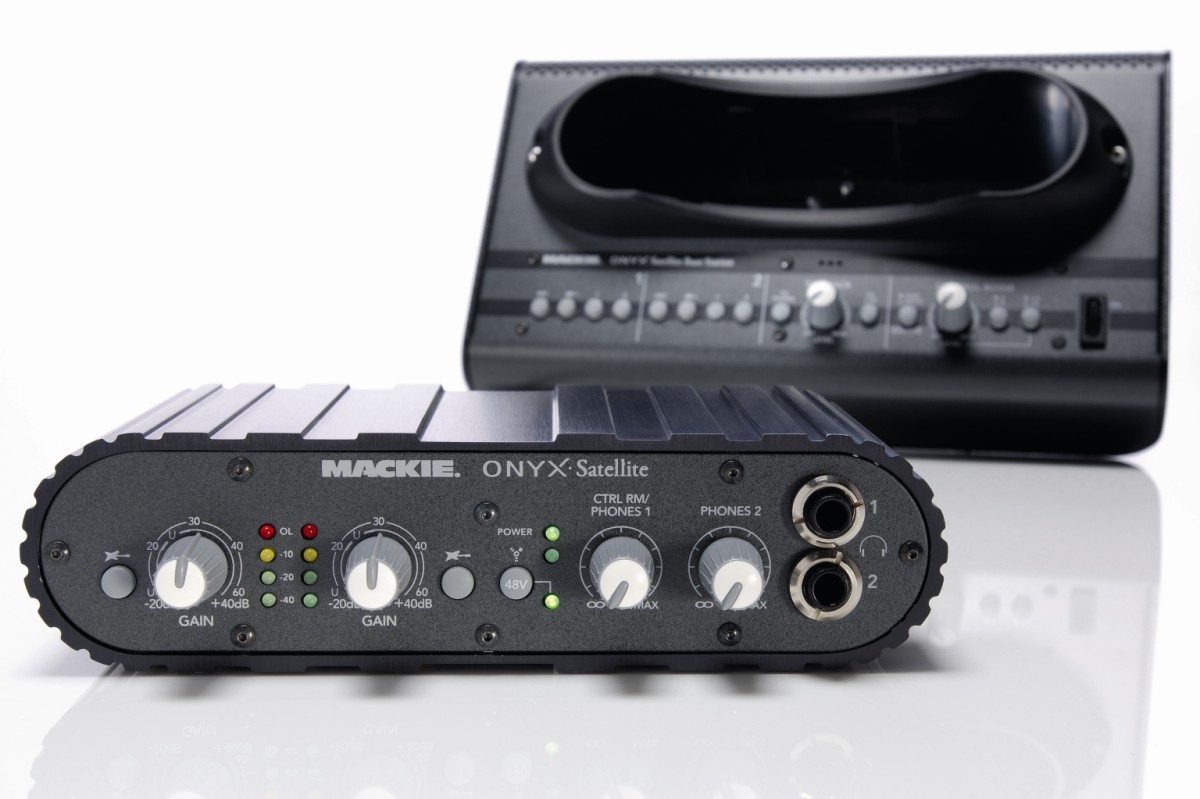MusicRadar Verdict
The Satellite´s innovative design will ensure that it gets your attention, and excellent performance means it truly deserves it. Most impressive
Pros
- +
Sounds good – looks amazing! Rugged two-piece design. Ultra low-latency drivers. Excellent connectivity. Bundled with Tracktion 2.
Cons
- -
Needs mains power with some laptops. No MIDI sockets or digital I/O.
MusicRadar's got your back
The first thing that strikes you when you take the Satellite out of the box is its remarkable industrial design. This is science fiction rendered into reality - the type of audio interface that Dr Who would choose for the centre console of the Tardis.
The next thing that hits you is the incredible build quality. The Base Station and the Pod each have a metal chassis and could clearly take some serious abuse without suffering any damage. The downside to this is weight - the Base Station´s isn´t an issue since it doesn´t need to go anywhere, but at 1.8lbs, the Pod isn´t the lightest audio interface you could pop in your rucksack.
You also need to consider that you could well need to carry the mains adapter as well. This is an inherent disadvantage of FireWire when compared to USB. The majority of PC laptops are fitted with a sub-miniature 4-pin FireWire port as opposed to the larger, 6-pin design, and this means that any attached FireWire devices have to get their power from elsewhere. For many laptop users, bus-powering of the Satellite´s Pod won´t be an option.
So, what about that break-apart design? Despite some initial scepticism, it must be said that it works rather well. Although on paper it´s hard to describe why you might want to leave half of your audio interface behind when you travel, in practice there are several benefits.
Balancing act
First among these is connectivity. Since portability isn´t an issue for the Base Station, a generous array of connections have been fitted to it. There are separate instrument and balanced mic inputs with phantom power, and not one but two separate pairs of line input sockets.
These line inputs are balanced, too - a bonus that makes the Satellite viable for professional applications. In addition, each of the two input channels has a send/return TRS jack socket for the benefit of those of you who like to add some analogue pre-processing (such as compression) before digitisation, and the pair of LED signal meters on the Pod will help you get your levels sorted out.
Want all the hottest music and gear news, reviews, deals, features and more, direct to your inbox? Sign up here.
There are also six main audio outputs (balanced), plus a second pair of main stereo outputs that can be connected to an alternative pair of speakers. Buttons on the front panel let you choose which speakers are to be used, which inputs are selected and whether phantom power is enabled or not.
You can even switch the main output volume between surround mode (all six outputs controlled) or stereo mode (only 1 and 2 controlled). In addition, there´s a rather nice push-to-talk microphone feature for communicating with artists via the headphones (Talkback), and a separate button to send this mic signal to software. This being the case, you can say professional-sounding things like “backing track”, “take one”, “alternative mix” or “take five” at the beginning of your recordings.
Podding along
Needless to say, unplugging all of the above every time you wanted to ‘go mobile´ would be a real chore - hence the Satellite´s two-part design. Simply pull the Pod out of the middle of the desktop Base Station and you´re ready to record on the go.
The Pod has just two inputs and outputs on the rear (the inputs are combined XLR/jack types) and two headphone outputs on the front (the same sockets you use when docked). All you need, usually. Clever design is one thing, but we´re happy to report that the sound quality of the Onyx Satellite system is also excellent, and well up to Mackie´s usual high standards. There are no digital I/O (S/PDIF) or MIDI connections, but most controller keyboards are now USB and we doubt that the digital connectivity will be missed by those who´d consider buying the Satellite.
In practical use, this system is near-perfect. The level of connectivity offered on the Base Station is exceptional, and the drivers ensure low-latency operation and stability. Although some people will have to use the mains adapter on the road, the two-part design is otherwise innovative, flexible and convenient. Add all this up, factor in a copy of Tracktion 2, and the Satellite ends up looking like one of the very best audio interfaces we´ve seen. Highly recommended.
MusicRadar is the number 1 website for music makers of all kinds, be they guitarists, drummers, keyboard players, djs or producers...
- GEAR: We help musicians find the best gear with top-ranking gear round-ups and high- quality, authoritative reviews by a wide team of highly experienced experts.
- TIPS: We also provide tuition, from bite-sized tips to advanced work-outs and guidance from recognised musicians and stars.
- STARS: We talk to musicians and stars about their creative processes, and the nuts and bolts of their gear and technique. We give fans an insight into the actual craft of music making that no other music website can.

